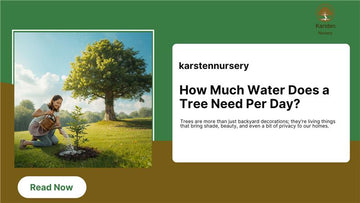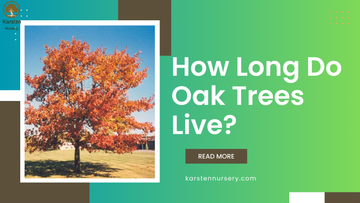
When you cut down a tree, the leftover stump can be an eyesore or a tripping hazard in your yard. Many folks opt for stump grinding to tidy things up, but a big question lingers, Will a tree stump regrow after the process? It's a valid concern, especially if you're hoping for a clean slate to replant or landscape. The short answer is that regrowth is possible, but it's not a sure thing. It depends on several factors, like the tree type and how the job is handled.
In this guide, we'll dive into the details, drawing from expert insights to help you make informed choices. Whether you're dealing with a stubborn tree stump sprouting after grinding or planning, understanding the process can save you time and hassle.
Stump grinding involves using heavy machinery to chip away the visible part of the stump down to several inches below the soil surface. This turns it into mulch-like wood chips that blend into the ground.
However, the tree root system after grinding often stays intact underground. That's where the potential for new growth comes in. Roots can store energy and nutrients, sometimes sending up shoots or suckers even after the stump is gone. But not all trees behave the same way, and with the right steps, you can minimize or eliminate this risk.
Understanding the Basics of Stump Regrowth
Let's break it down: can a tree regrow from a stump? In many cases, yes, because grinding doesn't kill the entire tree system. The roots remain alive and can draw on stored reserves to push out new growth. This is especially true for certain species that are known for their resilience. For instance, trees like willows, poplars, and elms have vigorous root networks that make stump regrowth more likely. Sesmas Tree Service notes that these types can sprout new shoots from the remaining roots, turning what seemed like a done deal into an ongoing battle.
On the flip side, species such as oaks or pines are less prone to this. They rely more on their trunk for survival, so once that's ground down, regrowth is rare. The tree health and regrowth potential play a role, too. If the tree was young and healthy before removal, it's got more energy to bounce back. Older or diseased trees might not have the strength. Think of it like this, the stump and roots are like a battery. If it's fully charged, it can power new sprouts; if not, it fizzles out.
Karsten Nursery, which specializes in fast-growing Trees, highlights how resilient some trees can be. Their trees, bred from Salix species, adapt to tough soils and recover from damage. One customer shared how a young tree got mowed over but came back stronger, becoming the fullest in the bunch. This underscores why willows and similar trees pose a higher risk for a tree stump to regrow. If you're removing one of these, extra precautions are key.
Factors That Determine If a Stump Will Grow Back
Several elements influence do tree stumps regrow. First, the tree species is crucial, as mentioned. Vigorous rooters like the SuperTree from Karsten can thrive in sand or clay, with roots pushing through challenges. Their drought tolerance, once established, means the underground parts are hardy, increasing the odds of the tree regrow from stump.
The grinding depth matters too. Standard grinding usually occurs 6-12 inches below ground, but if roots are shallow or extensive, some may escape untouched. Grinding depth and regrowth prevention go hand in hand; deeper grinding reduces the chance, but it's not foolproof without addressing the roots.
Age and condition factor in as well. A young tree's roots are more active, leading to quicker stump sprouts and suckers. Environmental conditions, like moist soil, can encourage growth, while dry areas might slow it down.
Read more blog: Types of Lilac Trees and Bushes: What to Plant in Your Garden?
How to Stop Tree Stump from Regrowing?

If you're wondering how to stop tree stump from regrowing, there are proven methods. The most effective is applying herbicide stump treatment right after grinding. Products containing glyphosate or triclopyr can be brushed onto the fresh surface to seep into the roots and kill them off. These chemicals target the tree without harming nearby plants if used correctly.
Chemicals to stop stump regrowth aren't your only option. Manual removal works for small shoots; cut them back repeatedly until the roots exhaust their energy. But this can take months or years. For a more permanent fix, consider permanent tree removal methods like full root excavation. This digs out the entire system, eliminating any chance of regrowth, though it's more invasive and costly.
Will painting a tree stump stop it from growing? Yes, if the paint includes a herbicide sealant. It's a common DIY hack, but professional advice is to check local regs and use eco-friendly options. Karsten Nursery's advice on watering echoes here, avoid overwatering post-grinding, as soggy soil can fuel root activity. Their slow-drip method for new plants could inspire careful moisture control around old stumps.
What Happens After Stump Grinding?
So, what happens after stump grinding? The ground stump area settles as roots decompose, which might create small dips in your lawn over time. Stump decay process takes 5-10 years, depending on size and species. During this, underground roots still alive could cause minor issues, like heaving sidewalks if they're large.
Does stump removal kill the roots? Grinding alone doesn't; it just hides the stump. But combined with treatment, it can. What happens to tree roots after stump grinding? They break down naturally, enriching the soil as mulch. Sesmas points out that this rarely causes yard problems, but monitor for settling.
For landscaping, the wood chips from stump chipping and mulching make great ground cover. Spread them around or mix them into the soil for new plantings. If replanting, wait a bit for any chemicals to dissipate.
Stump Grinding vs Complete Removal: Which is Better?

When deciding between stump grinding vs complete removal, weigh your needs. Grinding is quicker, affordable, and less disruptive, ideal for aesthetics. But if regrowth worries you, full removal ensures stumps do not grow back is a no. It's better for areas where roots might interfere with utilities or foundations.
Is it better to grind a stump or leave it? Grinding beats leaving it, as untreated stumps rot slowly and attract pests. Plus, ground areas are safer and prettier.
What to Do After Grinding a Stump?
What to do after grinding a stump starts with cleanup: rake up chips and fill the hole with topsoil for a smooth lawn. Seed grass or plant flowers once settled. Monitor for sprouts and treat promptly. If planting new trees, you can consider options like Karsten Nursery.
In the end, can a tree grow back after stump grinding? It can, but with species awareness, proper grinding, and treatments, you can prevent it. Consult a professional like Sesmas for grinding or Karsten Nursery for replanting ideas. Your yard can stay beautiful and regrowth-free with a little planning.
FAQs
Q. What Happens to the Root System?
After stump grinding, the root system remains in the soil and decomposes over several years. It may send up new shoots if not treated, but natural decay usually doesn't cause major issues.
Q. How Does Stump Grinding Stop a Tree From Growing Back?
Stump grinding removes the visible stump but doesn't kill roots unless combined with herbicides. It reduces regrowth potential by eliminating the main growth point, but full prevention often requires chemical treatment or root removal.
Q. Can a tree grow back after stump grinding?
Yes, it's possible, especially for species with strong root systems like willows. However, proper grinding depth and herbicide application can minimize or eliminate this risk.
Q. How to stop a tree stump from growing again?
Apply a herbicide to the fresh stump surface, cut back any emerging shoots repeatedly, or opt for complete root removal. Avoid overwatering the area to discourage root activity.
Q. What happens to tree roots after stump grinding?
The roots stay underground and slowly decompose, enriching the soil. They may produce suckers initially, but will die off over time if treated.
Q. Is it better to grind a stump or leave it?
Grinding is generally better as it improves safety, aesthetics, and prevents pest attraction. Leaving a stump can lead to slow rot and potential regrowth.
Q. What to do after grinding a stump?
Clean up wood chips, fill the hole with topsoil, monitor for sprouts, and consider replanting or reseeding the area once it settles.
Read more related blog:

Do All Hybrid Trees Perform Equally? Comparing the Most Productive Types



